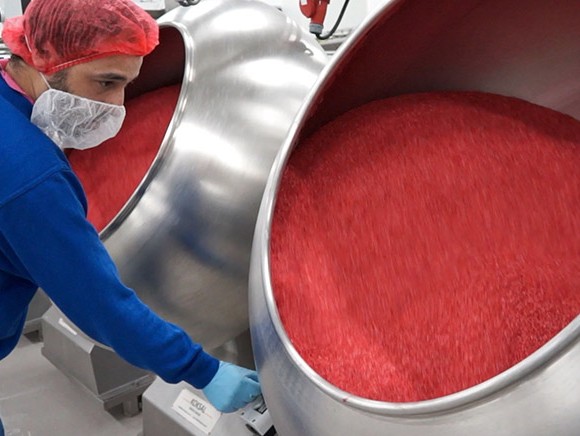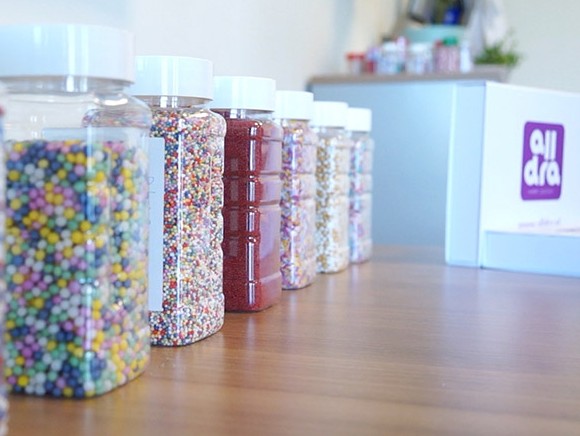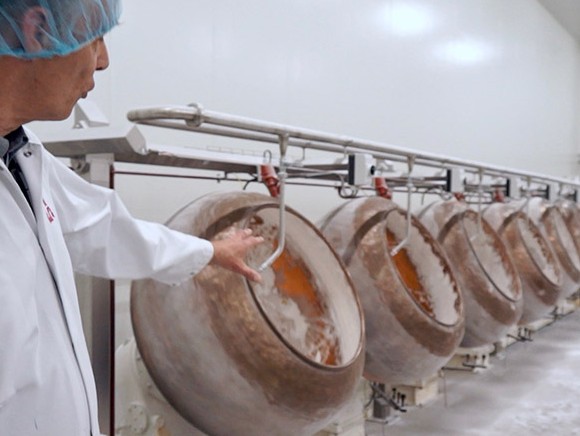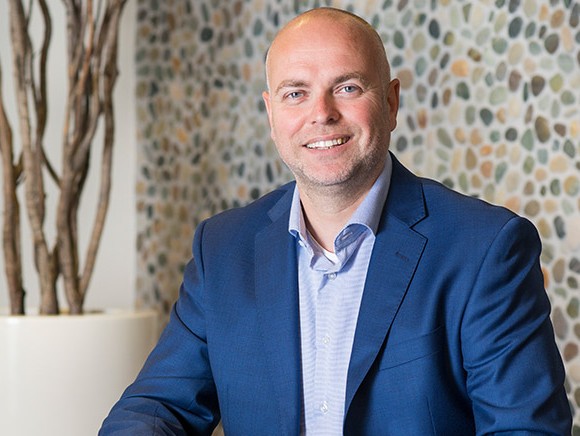
How do we get production operational and certified as quickly as possible after a fire? That is the challenge sugar decoration company Alldra faced two years ago. The solution: let the new construction take place at the same time as setting up and implementing a new quality management system.
‘This has increased the quality awareness among the operators’
A heavy, roaring fire in the location of Alldra in Rijssen laid the entire company flat on 20 May 2016. But there was no defeat: “The choice for new construction was taken quickly, as soon as during the crisis consultation after the fire”, director Coen Louwerse reflects. He emphasises the importance of informing and reassuring the customers, from the beginning all the way to the start of the production: “Being open is crucial in situations like those. We deliver our products to ice cream and bakery manufacturers, candy manufacturers and co-packers for the retail market. Fortunately, we were able to temporarily outsource a part of the production. This allowed us to take care of important deliveries.”
Within two weeks, Alldra found a suitable business premises with a surface area of 4,000 m2 in Almelo. Coen Louwerse: “We then worked hard to get production started again as quickly as possible”.
“Of course, without compromises in the field of quality and food safety”, Q&A manager Tony Schoorlemmer adds. “Supported by quality advice agency KTBA, we finally passed with flying colours and obtained the BRC7 certificate.”
Alldra specialises in the production of sugar sprinkles, and soft and hard musket (musket seed). Only natural ingredients are used for the production for a clean label. Sugar sprinkles and soft musket are produced in roughly the same quantities: approximately 1,000 tonnes per year, plus another 1,300 tonnes of hard musket. Tony Schoorlemmer explains the process: “For the musket seed, we dose granulated sugar into large, rotating, open pans. After adding sugar syrup, we add starch for hard musket and powdered sugar for soft musket. Small round balls form thanks to the rotation. Turning a sugar core into a musket balls takes one to one and a half days. Then, the musket is coloured in the rotating pans. The sprinkle installation for the sugar sprinkles is automatically fed with a dough mass of sugar, vegetable oil and water. After producing the white semi-finished product, we can create all possible colours. After extruding, the sprinkles are dried in a drying chamber. It was the drying chamber in Rijssen where, due to a short circuit, the disastrous fire erupted. The damage was massive: the sprinkle system was lost entirely, as well as a third of the 200 pans for production and colouring the musket.

For the new construction in Almelo, it was decided to build it one department at a time, leaving them clean and ready for production as well. To get the production operational and certified as fast as possible, the implementation of the quality management system happened simultaneously with the new construction work. “The FSCC 22000 certificate for Rijssen had of course expired. Logically, for the new construction, the BRC7 food safety standard came into the picture. It was a great moment to take the quality and safety level of the production to a higher level”, says Schoorlemmer. Jacco Blenk, consultant at quality advice agency KTBA, clarifies: “FSSC 22000 includes guidelines that the management implements itself based on risk analysis. BRC does not allow that kind of freedom. Therefore, this standard is a great guideline for guaranteeing food safety”.
Tony Schoorlemmer: “Due to the phased start-up of production and maintaining a strict separation between new construction work and production areas, we were successful in guaranteeing the quality and food safety”.
Jacco Blenk: “Work was continuously commencing or being completed. Or there were adjustments to the design, causing the procedures and documentation to need adjustments as well”.
“Even so, just six weeks after the fire, we could start with the first production of musket in a responsible manner”, says Tony Schoorlemmer. “And the sprinkle line, which needed to be constructed from scratch, was already operational in November 2016.”
Alldra
The family company Alldra was founded in 1930. It then became part of various companies, including CSM and later Heinz (which acquired CSM). A management buy-out followed in 2004, causing the company to come into the hands of 6 shareholders. Three of these were bought out on 2008. In 2016 - during the new construction - Iscal Sugar from Lelystad (part of Finasucre from België) acquired Alldra. Now it is part of a family company once again.

With the design of the new box-in-box factory in a - so to speak - virgin business premises, the focus was on the most hygienic production environment possible and optimal logistical routing. The new building offered the space for this. Moreover, a place for an own storage for end products has been realised and the packaging department has been designed in such a way that there is a wood-free zone. Marije Krabbe-Krejenzang, QA Technologist, indicates that separated areas have been created for wet cleaning, battery chargers and the steam supply. “In addition, there is lots of attention to preventing allergen contamination in the production, mainly through separating the production of hard musket from the production of soft musket. This is very important, as hard musket contains starch from wheat.”
KTBA chimed in with the design plans and gave improvement recommendations where needed. “This usually revolved around details”, says Blenk. “For example, when looking at the building plans, we discovered a door that provided direct access to the production area. However, there was no hand washing facility or footwear brush behind it. That could give rise to use as a shortcut to the production area. Another example was the advice to install a fence at the hygiene barrier, so that employees could not bypass it on their way to the production area. Added to this were the additional requirements from BRC. The standard explicitly requires the entire quality system of Alldra to be validated and verified in practice.” A part of this verification process is the verification report and the management review. “The full quality system needed to be assessed while at work in practice at Alldra”, says Blenk. “Achieving the BRC AA status confirmed that the quality system worked excellently.”

Quality and food safety constantly challenge Alldra to be the best they can be. “BRC sets the bar significantly higher than FSCC 22000”, the QA manager realises. “What is important now is that the operators focus more on preventive measures in production, causing ‘corrective measures’ to disappear in the long run. Employees need to point out implemented hygiene measures to each other, work according to the rules, and honour their agreements. That is why we have a daily quality meeting: what is going well, what is going wrong, what can be improved? We want to involve our employees in the production, and when problems arise, ensure they can solve them together. This has increased the quality awareness among the operators. Ultimately, you are creating quality on the work floor.”
Picture 3: Jacco Blenk, consultant KTBA
Picture 4: Tony Schoorlemmer, Q&A manager Alldra
Source: © KTBA